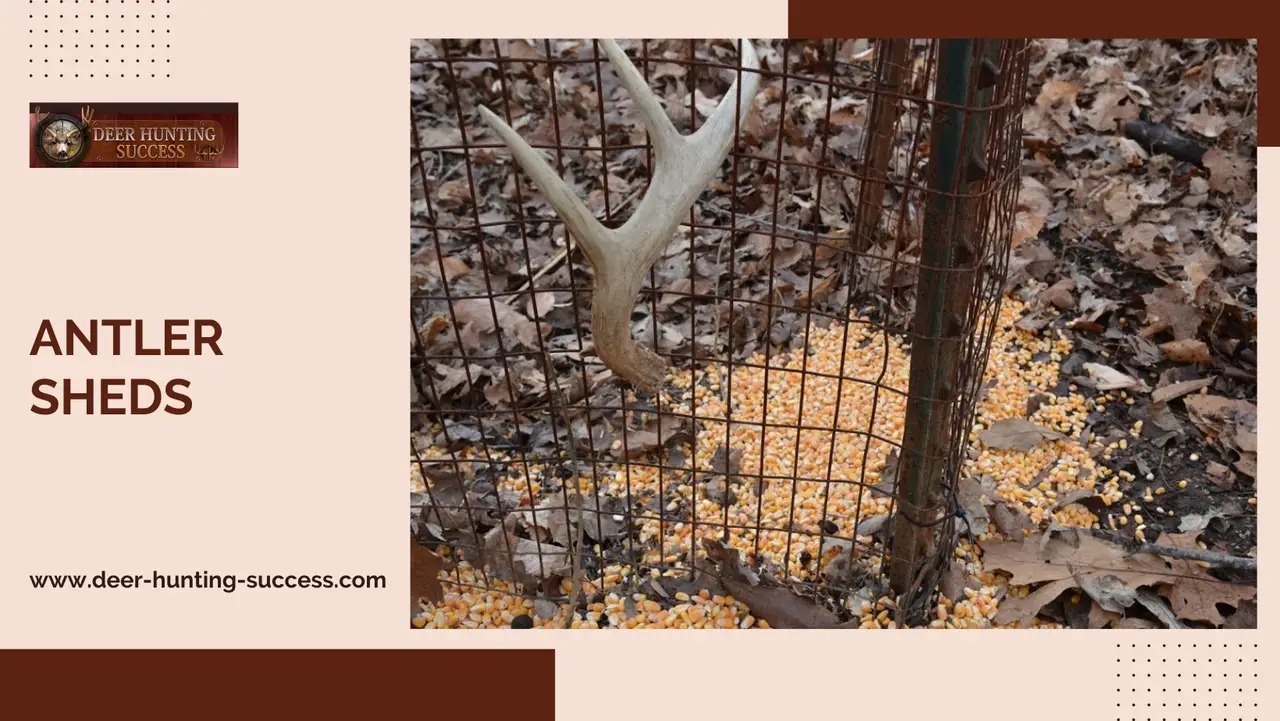Antler sheds are dropped antlers that fall off the deer each year in winter or early spring.
Lots of people collect them either for commercial purposes [antler furniture of jewellery] or as indications of the bucks that have survived the hunting season, and their size and potential for next season. It also helps a hunter pattern a trophy buck in their hunting area.
It can also be a great family activity or one involving the kids. A walk in the woods with a child, looking, exploring and discussing what you see is a great way to spend a spring day. It is also a great way to educate a child on deer sign that you will encounter along the way.
- The same deer tend to shed their antlers at roughly the same time each year, so keep a log of the date and location they are found
- Often both will fall off within 48 hours of each other
- Both sheds are often found within 100 yards of each other, so if you find one side, look for the other within a 100 yard radius
- Young bucks tend to shed last
- More dominant bucks cast them sooner than subordinate bucks
- Antler sheds typically don’t last longer than a year as they get chewed on by mice, squirrels and deer for their calcium, phosphorus and other minerals
- Animals in good condition drop their antlers earlier than animals in poor condition
The best way is to watch the deer at shedding time and seeing where the big bucks spend their time.
In the northern states it starts around January, and the farther south you go, the later it gets towards March and April.
- Antlers usually drop when the deer are moving such as swamps, draws and sloughs. Jumping and bounding jar them loose so look near fence lines, gulches, narrow creeks or steep cut banks
- Open fields such as winter wheat provide easier areas to spot them
- Along the edges of dense bedding areas. A buck spends a lot of time here as it provides winter food and cover so look in areas such as honeysuckle and bramble bushes
- Concentrate on bedding areas that shelter deer from prevailing winds. Trophy deer stretch and shake themselves after rising, especially after rain or a snowfall
- Check out south facing hillsides with dense cover that border agricultural fields
- Look for funnels that link bedding to feeding areas, such as a conifer cedar swamp to an agricultural field or a clear cut with browse
- In the vicinity of rubs or particularly rub lines [which should be easier to see at this time of the year]Look throughout brushy trails where deer have to crouch down to pass through
- Along trails or especially where trails meet in the woods
- The best place to keep your antler sheds is indoors in a year round temperature and humidity controlled environment
- A naturally colored shed can receive a couple of coats of paste floor wax buffed to a hard shine
- If chalking has commenced, soak them in warm linseed oil until they stop absorbing the oil. The oil makes them brittle, so don’t use them for rattling, especially on a cold morning.
- Clear non-yellowing urethane spar varnish can also be used to preserve, however is a lot more expensive
When searching please keep your distance from wintering animals to minimize stress and disturbance on winter ranges. Winters are hard on the animals and their energy levels are depleted, and the does will likely be heavy with fawns.
Remember
A game tag is required to take antler sheds across state lines. An interstate game tag must be attached to all antler sheds, and if the antlers are still attached to the skull, approval from a G & F officer is required before moving the antlers from the site.
Know the rules for the area you wish to go looking, and remember permission is required from landowners before going onto private land.
Read More: Tree Stand Steps
Related Links:
- https://en.wikipedia.org/wiki/Velvet_antler /By Wikipedia
- https://en.wikipedia.org/wiki/Antler /By Wikipedia
- https://www.wikihow.com/Mount-Antlers /By Wikihow
- https://www.wikihow.com/Clean-Deer-Antlers /By Wikihow

